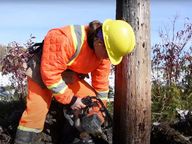Many critical components of our distribution system were installed during urban and rural electrical initiatives that ran between 1920 to 1960. Much of that infrastructure is still in service and our electrical distribution system is still reliably delivering power to our customers.
Maintenance and inspection programs keep these components functional (many are reaching the end of their life span) until replacement is necessary. We list the component’s annual replacement cost, and if applicable, its annual rehabilitation cost. Rehabilitation repairs or restores the component’s health, and prolongs its life span.
Underground cables
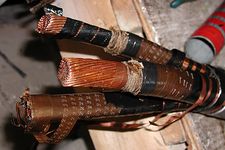
- Life span: 30 to 70 years depending on application and type;
- Length in service: 10,000 km;
- Annual rehabilitation cost: $5 million;
- Annual replacement cost: $7 million.
Underground cables are insulated conductors (power lines) used to distribute electricity from substations to distribution transformers. Unlike overhead power lines, underground cables are typically insulated with a non-gaseous insulating medium (for example, plastic, rubber, paper, or oil) that can be installed directly in the ground.
Insulating material on underground cables allows them to be installed nearer to each other. Many circuits can also be installed in small right-of-ways through an underground duct line system.
Underground cables are exposed to voltage stress, and heat from loading and environmental elements. Aging depends on the cable type, and can be either mechanical damage caused by external factors or operational stress. Some cable types can be rehabilitated using a silicone injection treatment to extend their service life before requiring replacement.
Failing to properly do a line locate can also pose a risk to underground cables: accidental dig-ins are a common cause of outages and cable failure.
Manholes

- Life span: 80 years;
- Number in service: 2,200;
- Annual replacement cost: $4 million.
Manholes are concrete enclosures built in underground duct lines for installing and splicing underground cables. They provide a connection point in duct lines to splice underground cable, install new circuits in high density areas, and house the underground secondary network transformers in downtown Winnipeg.
Manholes are subject to environmental conditions such as ground movement and tree roots, and vibrational stresses such as traffic, which may cause mechanical failures.
Duct lines

- Life span: 100 years;
- Length in service: 240 km;
- Annual replacement cost: $1 million.
Duct lines provide a path for multiple underground high and low voltage cables in a congested area. They are found throughout the province, but are most commonly used for major station feeder egresses and in congested locations such as downtown Winnipeg.
In locations with limited available space, they can route many circuits along narrow corridors. Duct lines can be installed under roads, sidewalks, or street boulevards, and are often installed during opportunities such as major road or bridge repairs.
Duct lines are subject to environmental conditions such as ground movement and tree roots, and vibrational stresses such as traffic, which may cause mechanical failures.
Padmount transformers
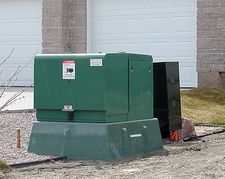
- Life span: 50 years;
- Number in service: 23,500;
- Annual replacement cost: $1 million.
Padmount transformers are an integral part of our electrical distribution system and are required to change utilization voltage levels. They transform voltage levels from medium to low levels.
Padmount transformers operate under many extreme conditions that affect their aging and potential for failure. Occasionally, they are damaged in vehicle or snow plow collisions. Transformer insulation degrades over time, and ambient temperature, wind, and loading history are factors in the speed of their degradation.
Wood poles
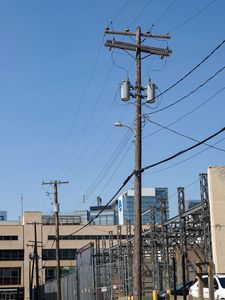
- Life span: 75 years;
- Number in service: 1.1 million;
- Annual rehabilitation cost: $8 million;
- Annual replacement cost: $4 million.
Wood poles are an integral part of our overhead electrical distribution system and provide safe ground clearance and mechanical support of power lines and energized equipment. About 250,000 of our province’s wood poles were installed between 1945 and 1960.
Most poles support 1 energized circuit, but multiple circuits may be installed on a common pole structure in urban areas.
Poles are subject to damage from severe weather, general decay, and mechanical damage. In spring, dirt and dust can build up on insulators, which can make them conductive and cause pole fires. Vehicle collisions are also a common cause of damage to poles.
Poles are inspected on a regular cycle and treated to extend their service life before requiring replacement.
How we restore our hydro poles
Watch our crews inspect each pole, and what they do to extend its life.
Overhead conductors

- Life span: 100 years;
- Length in service: 72,000 km;
- Annual replacement cost: $24 million.
Overhead conductors (power lines) deliver electrical energy from the distribution system to our customers. Most conductors are overhead; the rest are underground cables.
As the overhead conductors age, the distribution system becomes more vulnerable to premature failure and lengthy power outages. Conductors have 2 primary modes of degradation: mechanical and electrical. Mechanical degradation includes environmental stresses, such as icing and tree contact. Occasionally farm or other large equipment will come into contact with, or pull down, overhead conductors. Electrical degradation includes overloading due to general load growth and high fault levels.
Overhead transformers
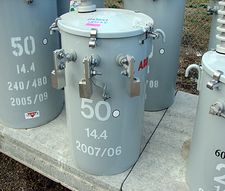
- Life span: 75 years;
- Number in service: 165,000;
- Annual replacement cost: $6 million.
Transformers are an important part of our electrical distribution system and are required to change utilization voltage levels.
Distribution class transformers are typically installed on distribution feeders and transform voltage levels from one medium voltage to another, or to low voltage.
Overhead transformers operate under many extreme conditions that affect their aging and potential for failure. Transformer insulation also loses its dielectric strength (its ability to insulate from electricity) over time. Ambient temperature, wind, and loading history are factors in the speed of their degradation. Most distribution transformer failures are caused by wildlife contact, tree contact, or lightning strike.
Street light standards
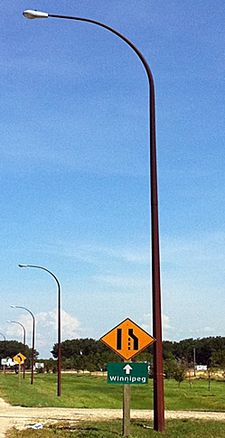
- Life span: 50 to 70 years;
- Number in service: 70,000;
- Annual replacement cost: $7 million.
Street light standards are typically made of tubular steel or aluminum. These standards provide roadway lighting in urban and high traffic locations. Most of Manitoba Hydro street lights are within the City of Winnipeg.
Street light standards are subject to environmental conditions, mechanical damage, and vehicle collisions. The nature and severity of the damage depends on its location and environment. Corrosion, both above and below the soil surface, is the main contributor to the structural breakdown. Corrosive environments are usually caused by salt spray from traffic, but differences in soil chemistry can also add to below-grade corrosion.

